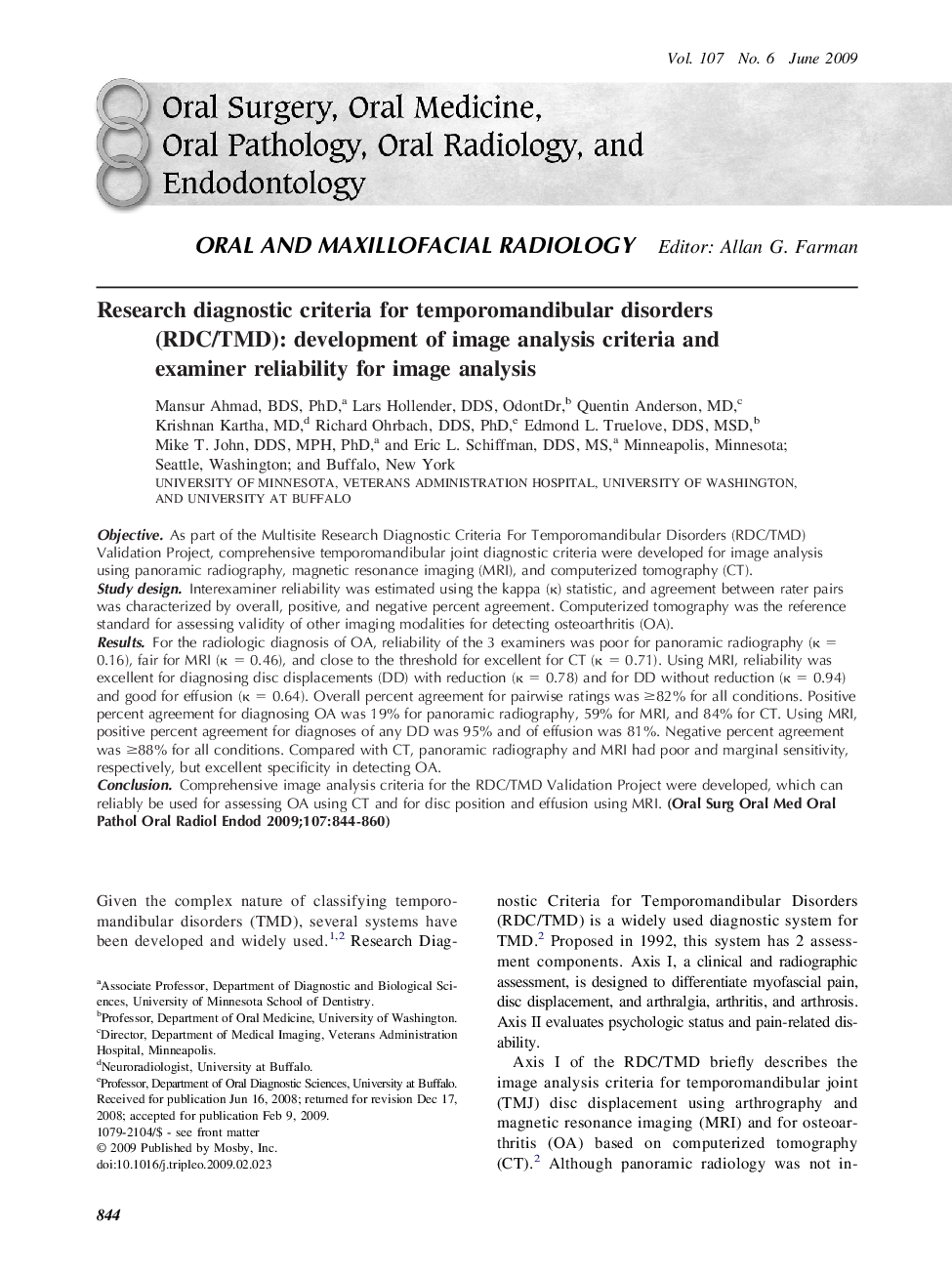| Article ID | Journal | Published Year | Pages | File Type |
|---|---|---|---|---|
| 3168038 | Oral Surgery, Oral Medicine, Oral Pathology, Oral Radiology, and Endodontology | 2009 | 17 Pages |
ObjectiveAs part of the Multisite Research Diagnostic Criteria For Temporomandibular Disorders (RDC/TMD) Validation Project, comprehensive temporomandibular joint diagnostic criteria were developed for image analysis using panoramic radiography, magnetic resonance imaging (MRI), and computerized tomography (CT).Study designInterexaminer reliability was estimated using the kappa (κ) statistic, and agreement between rater pairs was characterized by overall, positive, and negative percent agreement. Computerized tomography was the reference standard for assessing validity of other imaging modalities for detecting osteoarthritis (OA).ResultsFor the radiologic diagnosis of OA, reliability of the 3 examiners was poor for panoramic radiography (κ = 0.16), fair for MRI (κ = 0.46), and close to the threshold for excellent for CT (κ = 0.71). Using MRI, reliability was excellent for diagnosing disc displacements (DD) with reduction (κ = 0.78) and for DD without reduction (κ = 0.94) and good for effusion (κ = 0.64). Overall percent agreement for pairwise ratings was ≥82% for all conditions. Positive percent agreement for diagnosing OA was 19% for panoramic radiography, 59% for MRI, and 84% for CT. Using MRI, positive percent agreement for diagnoses of any DD was 95% and of effusion was 81%. Negative percent agreement was ≥88% for all conditions. Compared with CT, panoramic radiography and MRI had poor and marginal sensitivity, respectively, but excellent specificity in detecting OA.ConclusionComprehensive image analysis criteria for the RDC/TMD Validation Project were developed, which can reliably be used for assessing OA using CT and for disc position and effusion using MRI.
